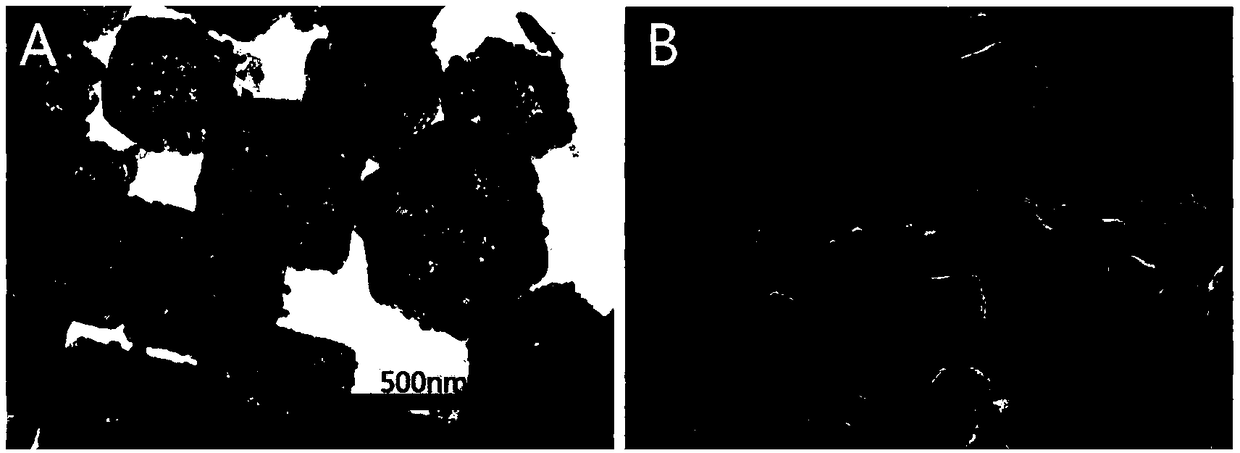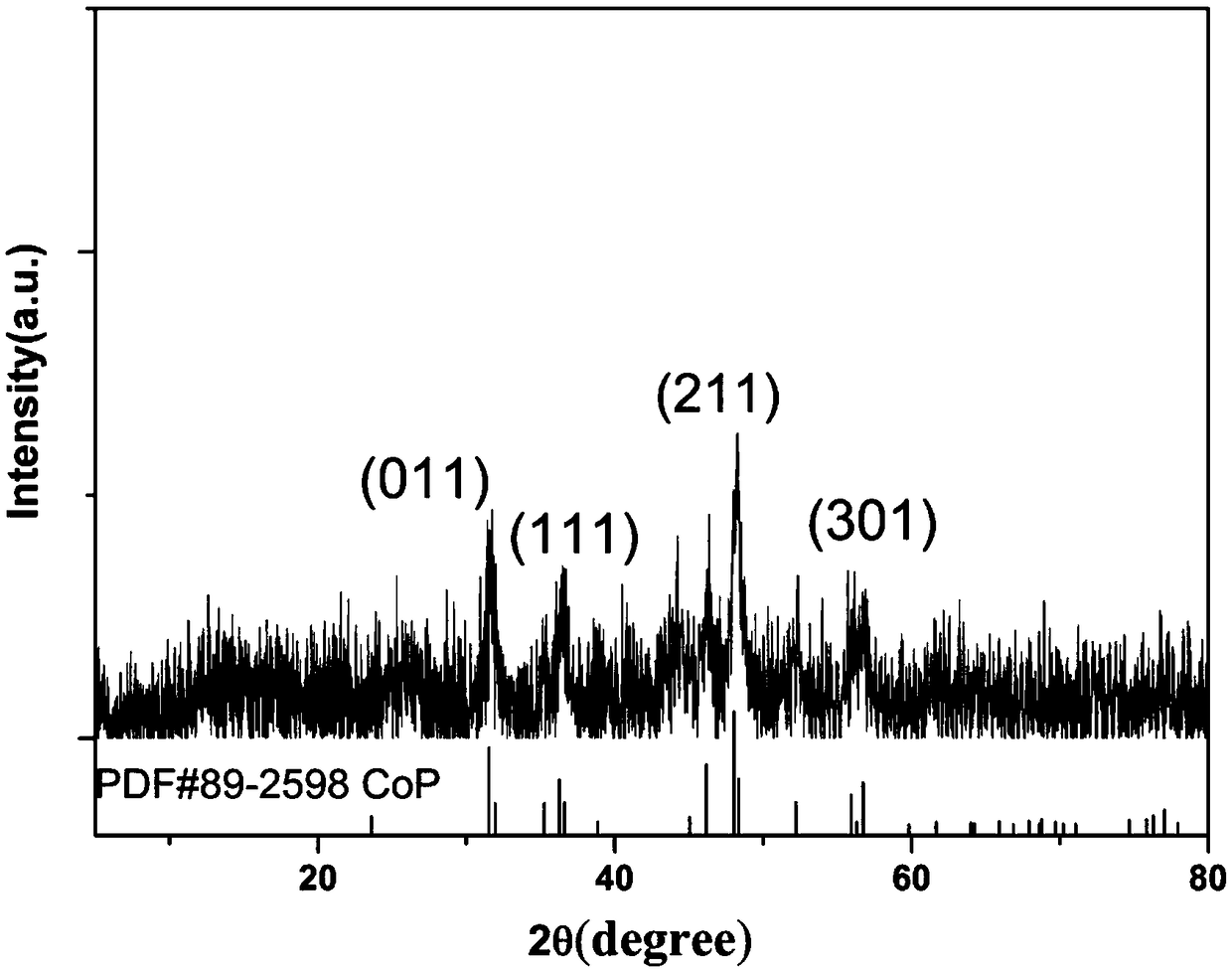Hollow carbon material doped with hollow cobalt phosphide nanoparticles in situ, preparation method and application of hollow carbon material in catalytic electrolysis of water for hydrogen production
A technology of in-situ doping and nanomaterials, applied in the field of catalytic electrolysis of water to produce hydrogen, can solve the problems of low catalytic activity, small specific surface area, complex manufacturing process, etc., and achieve simple reaction process, simple experimental operation, and good repeatability Effect
- Summary
- Abstract
- Description
- Claims
- Application Information
AI Technical Summary
Problems solved by technology
Method used
Image
Examples
Embodiment 1
[0018] (1) Preparation of metal-organic framework material ZIF-67 with dodecahedral morphology containing cobalt ions: 498 mg of Co(NO 3 ) 2 ·6H 2 O and 1400 mg of 2-methylimidazole were dissolved in 50 mL of methanol, and then the two solutions were mixed uniformly to obtain a purple solution, which was left at room temperature for 6 h. The product was purified by centrifugation (5000rpm, 10min), washed three times with methanol, and dried at 60°C for 12h. Finally, a metal-organic framework material ZIF-67 with a dodecahedral morphology was obtained, with a product quality of 400mg.
[0019] (2) Preparation of hollow polymer nanomaterials containing cobalt coordination doping: Weigh 760 mg of ZIF-6 prepared in step (1), and disperse it in 75 mL of methanol. After that, 56.9 mg of dopamine hydrochloride was weighed and dissolved in 15 mL of methanol to form a dopamine solution. The ZIF-67 dispersion was mixed with the dopamine solution, and the reaction system was stirred a...
Embodiment 2
[0024] (1) Preparation of metal-organic framework material ZIF-67 with dodecahedral morphology containing cobalt ions: 498mgCo(NO 3 ) 2 ·6H 2 O and 700mg of 2-methylimidazole were dissolved in 50mL of methanol respectively to obtain a purple clear solution, and then the solution was mixed uniformly and allowed to stand at room temperature for 24h. The product was purified by centrifugation (5000rpm, 10min), washed three times with methanol, and dried at 60°C for 12h. Finally, a metal-organic framework material ZIF-67 with a dodecahedral morphology was obtained, with a product quality of 100mg.
[0025](2) Preparation of hollow polymer nanomaterials containing cobalt coordination doping: Weigh 760 mg of ZIF-6 prepared in step (1), and disperse it in 75 mL of methanol. After that, 56.9 mg of dopamine hydrochloride was weighed and dissolved in 15 mL of methanol to form a dopamine solution. The ZIF-67 dispersion was mixed with the dopamine solution, and the reaction system was ...
Embodiment 3
[0030] (1) Preparation of electrocatalytic working electrode: Dissolve 10 mg of the hollow cobalt phosphide / carbon composite hollow nanomaterial prepared in Example 1 in a mixed solvent of 900 μL methanol and 100 μL, 2 wt % perfluorosulfonic acid resin, and ultrasonically Treat for 30 minutes to make it a uniform dispersion. Afterwards, 10 μL of the dispersed liquid was dropped on the glassy carbon electrode and dried at room temperature.
[0031] (2) Linear voltammetry test: the voltage range of the linear voltammetry test is 0-0.6V, the scanning speed is 10mV per second, and the electrolyte used is 0.5M sulfuric acid solution.
[0032] (3) Catalytic stability test: First, through cyclic voltammetry scanning, the test voltage range is 0-0.6V, the scanning speed is 100mV per second, and the number of scanning cycles is 1000. Then carry out the linear voltammetry sweep test in step (2), and compare the result with the result in step (2).
[0033] (4) Electrochemical AC impeda...
PUM
 Login to View More
Login to View More Abstract
Description
Claims
Application Information
 Login to View More
Login to View More - R&D
- Intellectual Property
- Life Sciences
- Materials
- Tech Scout
- Unparalleled Data Quality
- Higher Quality Content
- 60% Fewer Hallucinations
Browse by: Latest US Patents, China's latest patents, Technical Efficacy Thesaurus, Application Domain, Technology Topic, Popular Technical Reports.
© 2025 PatSnap. All rights reserved.Legal|Privacy policy|Modern Slavery Act Transparency Statement|Sitemap|About US| Contact US: help@patsnap.com



